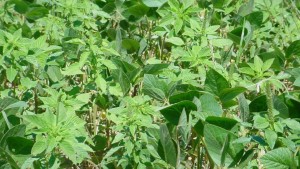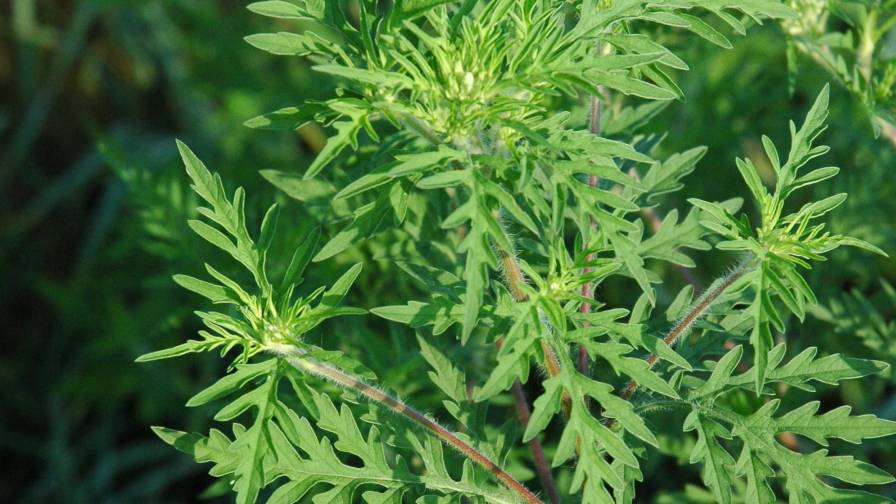Early Identification Pays When Controlling Palmer Amaranth
In recent years Palmer amaranth has been confirmed in Iowa, Illinois, Indiana, Michigan and Ohio indicating it could become a major agronomic weed in the Corn Belt, according to an article on Wyffels.com.
The most important step in preventing and managing Palmer amaranth is early identification. Growers lose effective management options later in the plant’s life cycle. Palmer can be easily misidentified as pigweed or waterhemp, especially in the seedling stages of growth. These are the characteristics to pay attention to for accurate identification.

Palmer amaranth can be easily misidentified as pigweed or waterhemp..
Pubescence. Redroot and smooth pigweed both have hairs on their stems and leaf surfaces. Palmer amaranth and waterhemp do not have hairs.
Leaf Shape. Palmer amaranth leaves are generally wide and ovate to diamond shape.
Waterhemp, on the other hand, are long, linear, and lanceolate. Pigweed leaves are similar to Palmer leaves in shape but the pubescence will differentiate them.
Petiole length. The petiole (stem-like structure connecting the leaf to the main stem) of Palmer will be as long or longer then the leaf blade. Waterhemp petioles will be shorter than their leaves.
Seed head. Although most management options are gone by the time Palmer reaches reproductive stage, it can be useful to look at seed head structure to identify escaped weeds. Palmer amaranth has a long, main, terminal seed head that can reach three feet long. It also has stiff, sharp bracts that give the heads a prickly feeling when touched.
Read the full story on Wyffels.com.






